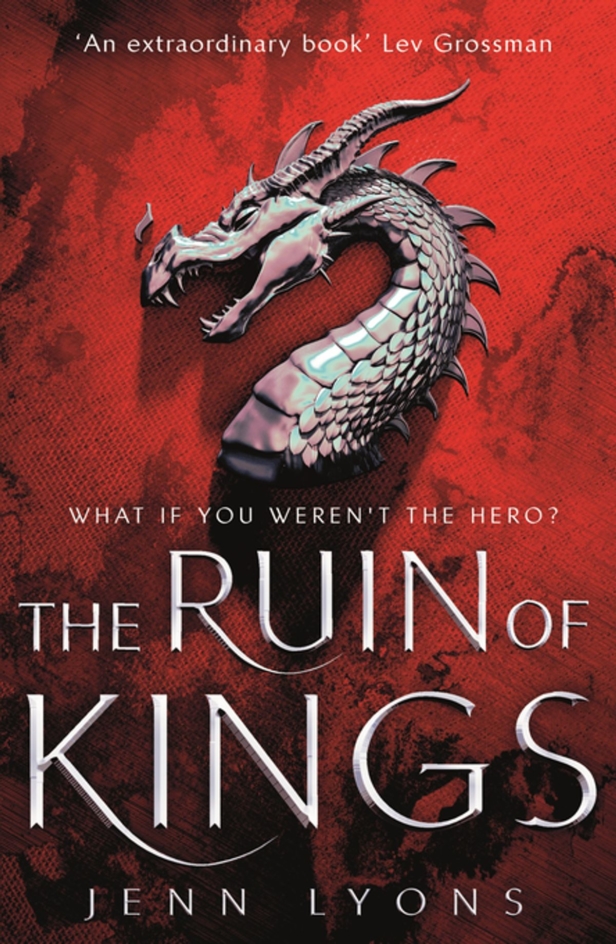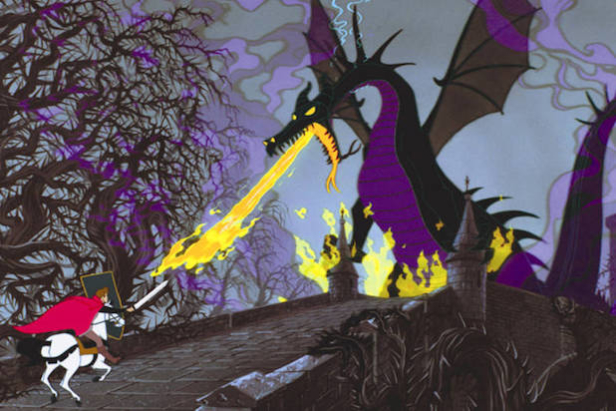Jenn Lyons’ The Ruin Of Kings is an epic fantasy filled with intrigue, magic, gods, demons and yes, dragons. Here, the author writes about her favourite winged fire-breathers…
I love dragons. When I was a little girl, I belonged to an after-school club that hosted a yearly themed party for our parents. And one year, they decided the theme would be fantasy.
This was my moment.
Because I’ve always been ‘that’ kid, the one who loved all manner of monsters (but most especially dragons) and drew them on everything I possibly could. And I’d hardly made a secret of this, so everyone at the club naturally turned to me when it came time to draw some fantasy themed bit of art on one of the large wall areas dedicated to murals.
They knew I’d draw a dragon. They assumed it. They also assumed I’d draw something along the lines of Puff the Magic Dragon or Pete’s Dragon. And that was an assumption too far.
I drew Tiamat.
Specifically, I drew Tiamat from Dungeons & Dragons, the five-headed evil queen of dragons. When the director of the club cleared her throat and tried to gently suggest that perhaps I might draw a cute dragon instead, I set fists to waist and loudly declared, “Dragons are NOT cute.”
So with that confession out of the way, let’s talk about my favourite dragons in books and movies (or rather books and one animated movie). I always joked that I’d pick up any book or product with a dragon on the cover. That’s largely remained true (that was, in fact, the whole reason I discovered Dungeons & Dragons in the first place, because that first boxed set had a large dragon on the cover).
The first dragon I can consciously remember was Maleficent from the end of Sleeping Beauty, when she changed into a dragon in order to beat Prince Charming (four-year-old me was so disappointed when she failed, too).
Thankfully, she was hardly the last dragon I’d run across. Besides, the many, many dragons from mythology all over the world, I’d also been introduced to book which are considered foundational texts of the SFF community. I discovered Ursula K. Le Guin’s Earthsea books by that point, with her own particular awe-inspiring take on the beasts. That was followed quickly by a book which I picked up again for that dragon on the cover, Dragonriders Of Pern, by Anne McCaffery. While modern me cringes a little at some of the problematic treatments of consent and sexuality in those books, younger me was enthralled by the idea of being able to actually ride a dragon. And of course, there was always Tolkien, because who couldn’t love The Hobbit’s Smaug?
More lovely books with dragons on the cover caught my attention: Barbara Hambly’s Dragonsbane (like Dragonriders of Pern, the cover had been painted by the great Michael Whelan, who apparently knows how to make me buy a book) and Robin McKinley’s The Hero And The Crown (whose dragon, Maur, is so evil that even death couldn’t stop him from screwing everything up for everyone.) Another favorite was the late, great Roger Zelazny’s Roadmarks, which seems like a book about time-travel but is really a book about dragons (and time-travel).
Dragons have hardly slowed down for the 21st century. Naomi Novik’s Temeraire series imagines an alternate universe Napoleonic war fought with dragons (including the titular Temeraire). Marie Brennan’s Memoirs Of Lady Trent is another love of mine, where the titular Lady Trent is the world’s preeminent natural historian, specializing in, you guessed it, dragons. Rachel Hartman’s Seraphina is set in a world where the dragons can take human shape by haven’t figured out how to mimic human emotions. Stephen Erickson’s Malazan Books Of The Fallen had some proper god-level dragons, not to mention a tip of the hat to Tiamat.
And I’d be remiss if I didn’t mention George R.R. Martin. Now normally I wouldn’t include A Song Of Ice And Fire, because one of the pet peeve hills that I’ll die on is that giant, winged, fire-breathing, four-legged lizards are dragons, and giant, winged, fire-breathing, two-legged lizards are wyverns, but Martin does such an amazing job with the dragons in his famous epic fantasy series that I feel obligated to overlook it.
Of course, there are more where those came from, but these remain some of my favourites for all manner of dragons—good, evil, inhuman, all too relatable, and everything in between.
The childhood version of me would want to see every single one of them up on a mural.
The Ruin Of Kings is book 1 in A Chorus Of Dragons, and is out now from Tor. Here’s the synopsis:
“When destiny calls, there’s no fighting back . . .
As a bard’s apprentice, Kihrin grew up with tales of legendary deeds. He also steals, desperate to buy a way out of Quur’s slums. Then he raids the wrong house, he’s marked by a demon and life will never be the same again.
Kihrin’s plight brings him to the attention of royalty, who claim him as the lost son of their immoral prince. But far from living the dream, Kihrin’s at the mercy of his new family’s ruthless ambitions. However, escaping his jewelled cage just makes matters worse. Kihrin is horrified to learn he’s at the centre of an ancient prophecy. And every side – from gods and demons to dragons and mages – want him as their pawn. Those old stories lied about many things too, especially the myth that the hero always wins.
Then again, maybe Kihrin isn’t the hero, for he’s not destined to save the empire. He’s destined to destroy it.”

